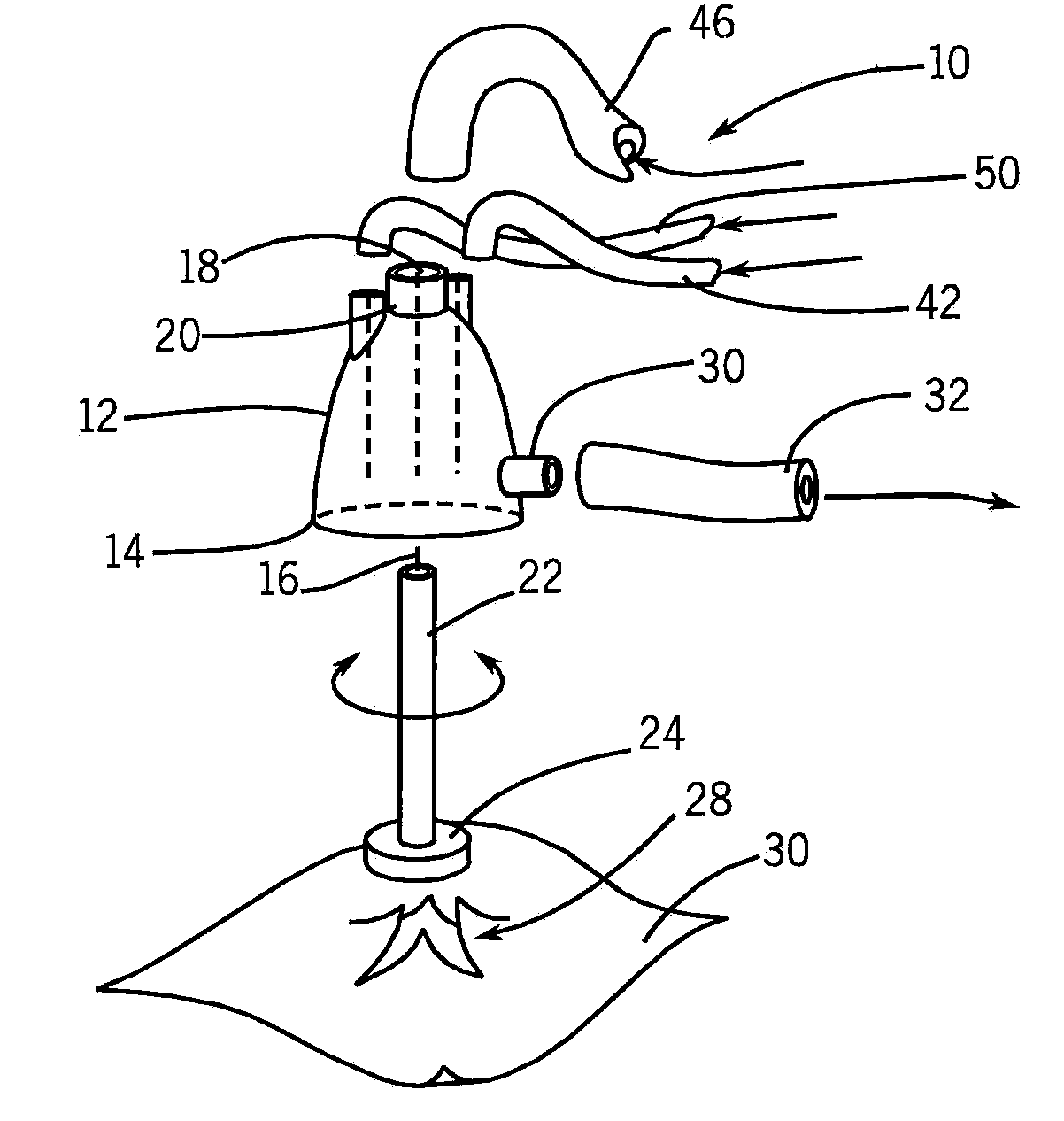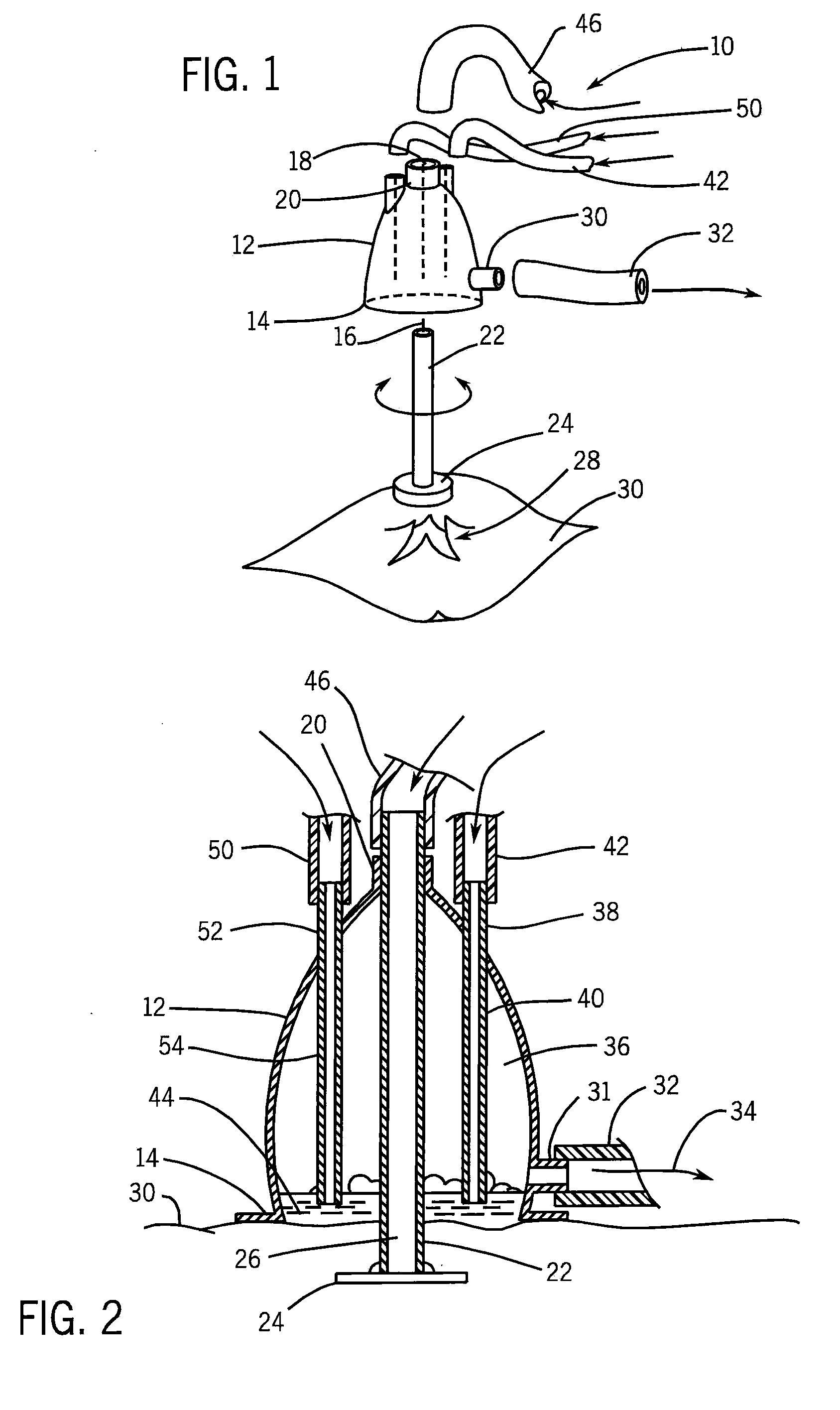Device for Treatment of Venous Congestion
a technology for venous congestion and devices, applied in the field of medical devices, can solve the problems of tissue death, venous stasis or pooling caused by arterial supply, and post-surgical complications of reconstructive or microvascular surgery, and achieve the effect of improving blood removal and preventing clot formation
- Summary
- Abstract
- Description
- Claims
- Application Information
AI Technical Summary
Benefits of technology
Problems solved by technology
Method used
Image
Examples
Embodiment Construction
[0025]Referring now to FIG. 1, the device 10 of the present invention includes generally a hollow, bell-shaped shell 12 symmetric generally about vertical axis 16 and having an open lower rim 14. The shell 12 may be constructed of plastic or glass and is preferably of clear material to allow visual inspection of its internal volume.
[0026]At the apex of the shell 12 is an opening 18 surrounded by a cylindrical sleeve 20. The sleeve 20 is sized to receive along axis 16, a conduit 22, the latter being preferably a stainless steel tube having a height greater than that of the shell 12. The conduit 22 may freely rotate within the sleeve 20, but blocks the opening 18 to prevent passage of air or liquid into or out of the opening 18 except through the conduit 22.
[0027]Referring now also to FIG. 2, attached at a lower end of conduit 22 removed from the sleeve 20 is a delivery tip 24 constructed of a microporous disk having an internal structure of pores (not shown) communicating with a cent...
PUM
 Login to View More
Login to View More Abstract
Description
Claims
Application Information
 Login to View More
Login to View More - R&D
- Intellectual Property
- Life Sciences
- Materials
- Tech Scout
- Unparalleled Data Quality
- Higher Quality Content
- 60% Fewer Hallucinations
Browse by: Latest US Patents, China's latest patents, Technical Efficacy Thesaurus, Application Domain, Technology Topic, Popular Technical Reports.
© 2025 PatSnap. All rights reserved.Legal|Privacy policy|Modern Slavery Act Transparency Statement|Sitemap|About US| Contact US: help@patsnap.com



